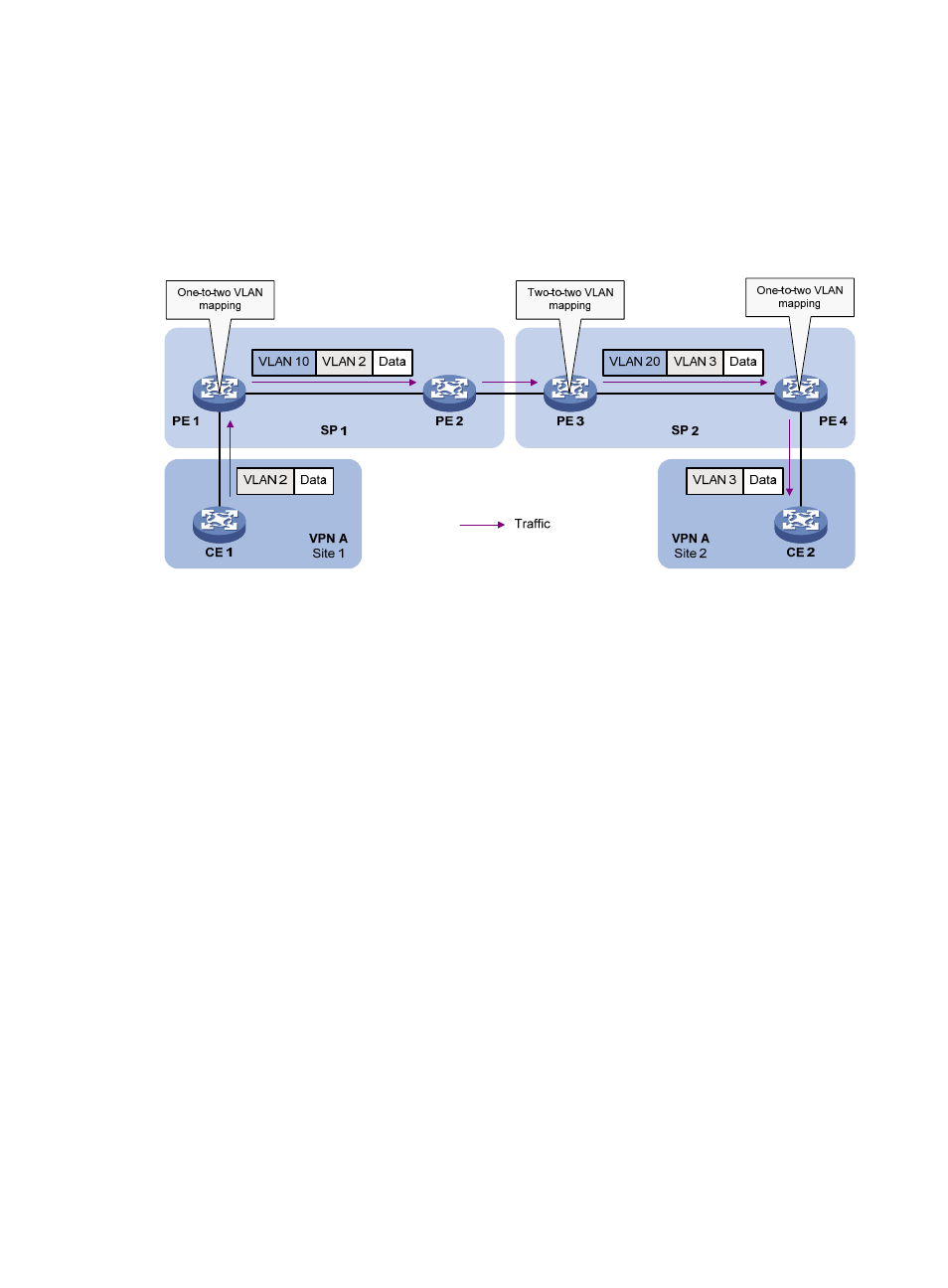Vlan mapping implementations – H3C Technologies H3C S5560 Series Switches User Manual
Page 248

214
Application scenario of one-to-two and two-to-two VLAN
mapping
shows a typical application scenario of one-to-two and two-to-two VLAN mapping. In this
scenario, the remote sites of the same VPN must communicate across two SP networks.
Figure 63 Application scenario of one-to-two and two-to-two VLAN mapping
Site 1 and Site 2 are in VLAN 2 and VLAN 3, respectively. The SP 1 network assigns SVLAN 10 to Site
1. The SP 2 network assigns SVLAN 20 to Site 2. When the packet from Site 1 arrives at PE 1, PE 1 tags
the packet with SVLAN 10 by using one-to-two VLAN mapping.
When the double-tagged packet from the SP 1 network arrives at the SP 2 network interface, PE 3
processes the packet as follows:
•
Replaces SVLAN tag 10 with SVLAN tag 20.
•
Replaces CVLAN tag 2 with CVLAN tag 3.
One-to-two VLAN mapping provides the following benefits:
•
Enables a customer network to plan its CVLAN assignment without conflicting with SVLANs.
•
Adds a VLAN tag to a tagged packet and expands the number of available VLANs to 4094 ×
4094.
•
Reduces the stress on the SVLAN resources, which were 4094 VLANs in the SP network before the
mapping process was initiated.
VLAN mapping implementations
shows a simplified network that illustrates basic VLAN mapping terms.
Basic VLAN mapping terms include the following:
•
Uplink traffic—Traffic transmitted from the customer network to the service provider network.
•
Downlink traffic—Traffic transmitted from the service provider network to the customer network.
•
Network-side port—A port connected to or closer to the service provider network.
•
Customer-side port—A port connected to or closer to the customer network.